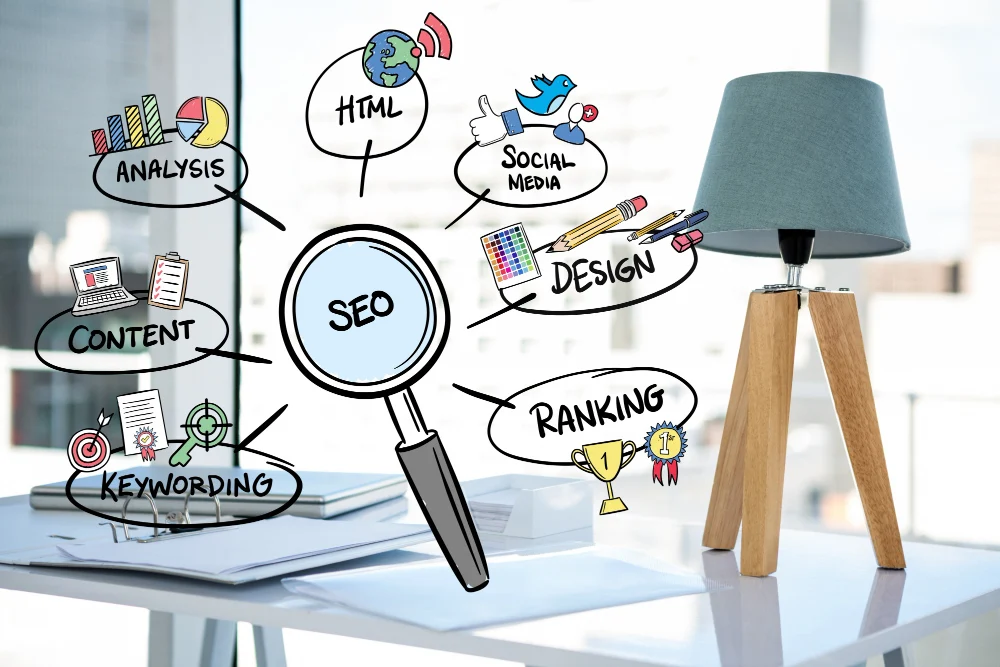Imagine a beautifully designed storefront on a bustling street. It catches the eye with its clean lines and inviting displays, but there's no sign or address. People might admire it from afar, but they won't know what it sells or how to find it. This is what a website can be like without SEO.
In today's digital world, your website is your online storefront. Search Engine Optimization (SEO) is like the neon sign that draws potential customers in. It ensures your website shows up in search results when people are looking for products or services like yours. But SEO goes beyond just visibility. It also influences how users experience your website, making it a crucial partner in modern web design.
Why is SEO Important for Web Design?
Think of SEO and web design as two sides of the same coin. A website that's visually stunning but difficult to navigate or slow to load won't rank well in search engines, and visitors will get frustrated. Conversely, a website optimized for search engines but clunky and unappealing won't keep users engaged.
Here's how SEO and web design work together:
Increased Visibility: SEO helps search engines understand what your website is about and who it's for. This increases the chances your website appears in search results for relevant terms, attracting more visitors.
Improved User Experience (UX): SEO best practices often overlap with good UX design. A clear website structure, fast loading times, and mobile-friendliness are all essential for both search engines and users.
Higher Conversion Rates: When users find your website because it's relevant to their search and offers a smooth experience, they're more likely to take the desired action, whether it's making a purchase, signing up for a newsletter, or contacting you.
How to Design a Website with SEO in Mind
Here are some key ways to integrate SEO into your web design process:
Keyword Research: Identify the terms your target audience uses to search for products or services like yours. Use these keywords strategically throughout your website content, including titles, headings, and meta descriptions.
Website Structure: Think of your website as a well-organized filing cabinet. Create a clear hierarchy of pages with a logical navigation system. This helps search engines understand the content and users find what they're looking for easily.
Content is King: Fill your website with high-quality, informative content that is relevant to your target audience and optimized for your chosen keywords. Don't just stuff keywords in; focus on providing valuable information that users will find helpful.
Mobile-First Design: With more and more people using smartphones and tablets to browse the web, it's crucial to ensure your website is mobile-friendly. This means it should be easy to read, navigate, and use on any device.
Technical SEO: There are technical aspects of your website that can impact SEO, such as page loading speed, image optimization, and schema markup. While these might sound complicated, many web design tools and platforms can help ensure your website is technically sound.
The SEO and Web Design Collaboration
While SEO and web design have distinct goals, the best results come from working together. Here are some tips for fostering collaboration:
Early Integration: Consider SEO from the very beginning of the web design process. This allows for a holistic approach that optimizes both user experience and search engine visibility.
Open Communication: Web designers and SEO specialists should communicate effectively to understand each other's goals and challenges.
Data-Driven Decisions: Use website analytics tools to track user behavior and search engine performance. This data can inform future design and SEO strategies.
SEO is an Ongoing Process
Just like a store needs to keep its window displays fresh, your website's SEO needs ongoing attention. Stay updated on the latest search engine algorithms and trends. Regularly review your website analytics and make adjustments as needed.
The Bottom Line
By working together, SEO and web design can create a powerful online presence for your business. A website that's both visually appealing and search engine friendly will attract more visitors, keep them engaged, and ultimately help you achieve your business goals.







